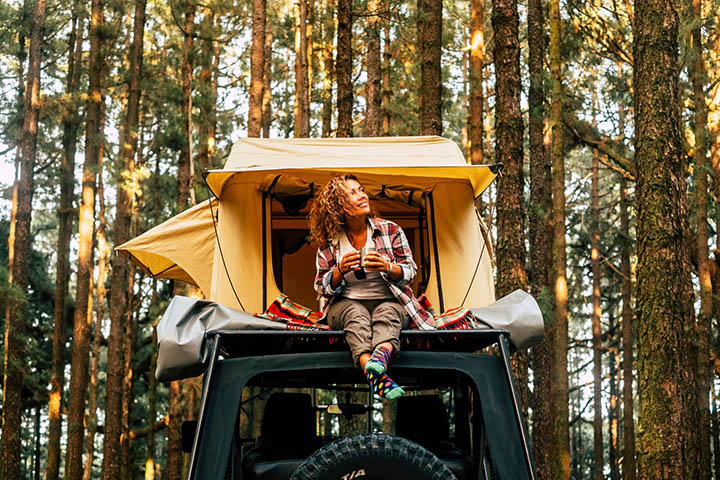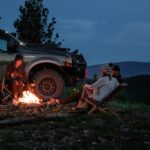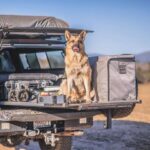Introduction to Overlanding
Overlanding is more than just a road trip; it is an immersive adventure that combines self-reliant travel with exploration of remote and often challenging terrains. Unlike conventional road trips, overlanding emphasizes the journey itself, encouraging travelers to connect with nature, discover hidden gems, and engage with local cultures. For beginners, understanding the fundamentals of overlanding is crucial to ensure a safe, enjoyable, and memorable experience.
Overlanding allows individuals and families to experience the world at their own pace. From the rugged mountains of Europe to the vast deserts of Africa, the appeal of overlanding lies in its flexibility and the freedom to explore off-the-beaten-path destinations. However, successful overlanding requires careful planning, appropriate gear, and knowledge of safe travel practices. This guide serves as a comprehensive resource for beginners, covering everything from planning your first trip to selecting essential gear and mastering navigation.
Planning Your First Overland Adventure
Proper planning is the foundation of a successful overland trip. It ensures safety, reduces unexpected challenges, and maximizes the enjoyment of your journey.
Setting Realistic Expectations
Beginners should approach overlanding with realistic expectations. The first trip may include unforeseen obstacles, such as difficult terrain, vehicle issues, or adverse weather conditions. Accepting that challenges are part of the adventure helps reduce stress and improves decision-making during the journey.
Tips for Beginners:
- Start with shorter trips to gain experience
- Choose routes suitable for novice drivers and vehicles
- Prepare contingency plans for unexpected situations
Choosing the Right Route
Selecting the right route is critical, especially for first-time overlanders. Consider the following factors:
- Terrain difficulty: Gravel, mud, sand, or paved roads
- Distance and duration: Start with manageable distances
- Accessibility: Ensure routes are navigable for your vehicle type
- Attractions: Scenic views, cultural landmarks, and camping opportunities
Popular Beginner-Friendly Routes:
- National parks with off-road trails
- Rural backroads with scenic landscapes
- Coastal routes with designated camping areas
Legal and Safety Considerations
Before departure, research legal requirements in your travel region:
- Driving permits and licenses
- Insurance coverage across regions
- Camping restrictions and local regulations
Safety Tips:
- Inform someone of your travel plans
- Carry emergency contacts and location details
- Familiarize yourself with basic vehicle repairs
Essential Gear for Overlanding Beginners
Proper gear enhances comfort, safety, and efficiency during overlanding. Below is a categorized checklist for beginners:
Vehicle Preparation
| Item | Purpose |
|---|---|
| 4×4 Vehicle | Ensures capability on varied terrains |
| Spare Tires & Repair Kits | Minimizes downtime due to tire issues |
| Recovery Gear | Winches, traction boards, and tow straps for stuck vehicles |
| Tool Kit & Fluids | Essential for basic vehicle maintenance |
Tips:
- Ensure your vehicle is mechanically sound before the trip
- Learn basic off-road driving techniques
- Check suspension, brakes, and tire pressure regularly
Camping Equipment
| Item | Purpose |
|---|---|
| Rooftop Tent / Ground Tent | Provides safe and comfortable shelter |
| Sleeping Bags & Mats | Ensures warmth and comfort during nights |
| Portable Stove & Cooking Gear | Allows preparation of meals anywhere |
| Water Filtration & Storage | Provides safe drinking water |
Tips:
- Pack lightweight and compact gear
- Organize items in labeled containers for easy access
- Consider multi-use items to save space
Navigation Tools
| Tool | Purpose |
|---|---|
| GPS Device | Accurate route navigation in remote areas |
| Paper Maps | Backup in case of electronic failure |
| Compass / Offline Apps | Useful for orientation without cell signal |
Tips:
- Download maps for offline use
- Mark waypoints for campsites and fuel stations
- Test navigation devices before departure
Safety and Emergency Gear
| Item | Purpose |
|---|---|
| First Aid Kit | Treats minor injuries and emergencies |
| Emergency Communication Devices | Radios, satellite phones, PLBs for safety |
| Fire Extinguisher | Prevents and controls small fires |
| Headlamps & Extra Batteries | Provides light during nighttime activities |
Overlanding Communication Gear
Staying connected is vital for safety and coordination, especially in remote areas.
Radios for Overlanding
CB Radios:
- Short-range communication (up to 20 miles)
- No license required
- Ideal for vehicle-to-vehicle communication
GMRS Radios:
- Longer range than CB radios (10–35 miles)
- Requires license in some regions
- Supports multiple users and repeaters
Ham Radios:
- Long-distance communication capabilities
- Requires licensing and technical knowledge
- Excellent for emergency situations
Keyword Integration: beginner overlanding tips, overland travel basics
GPS Trackers
- Accurate location tracking in areas without cell service
- Allows route planning and backtracking
- Some models include weather updates and tracking features
Popular Features:
- Offline maps and waypoints
- Long battery life
- Rugged and waterproof construction
Emergency Devices
Satellite Phones: Global connectivity for emergencies
Personal Locator Beacons (PLBs): Trigger rescue signals
Satellite Messengers: Two-way communication and SOS alerts
For detailed guidance on communication devices, see our Overlanding Communication Gear guide.
Budgeting for Your First Overland Trip
Understanding costs ensures a stress-free journey.
| Expense Category | Estimated Cost per Week |
|---|---|
| Fuel | $100–$250 |
| Accommodation | $50–$150 |
| Food | $50–$120 |
| Gear & Equipment | $200–$1,000 (one-time) |
| Park Fees & Permits | $20–$50 |
Tips:
- Prioritize essential gear investments
- Combine camping with occasional lodging to balance cost and comfort
- Carry an emergency fund for unexpected expenses
Preparing for the Journey
Physical and Mental Preparation
- Build endurance for long drives and off-road conditions
- Develop problem-solving skills for unexpected situations
- Practice patience and adaptability
Packing Essentials
- Layered clothing for varying climates
- Sufficient food and water supplies
- Personal items, tools, and spare vehicle parts
Test Runs
- Conduct short trips to evaluate equipment and vehicle readiness
- Familiarize yourself with navigation and camping routines
On the Road: Tips for a Successful Overlanding Experience
Driving Techniques
- Use low gears for steep inclines and descents
- Maintain steady speeds on rough terrain
- Avoid sudden maneuvers that may destabilize the vehicle
Campsite Management
- Choose level and safe ground for tents
- Follow Leave No Trace principles
- Keep food secured to avoid wildlife encounters
Community Engagement
- Interact with fellow overlanders and local communities
- Share tips and experiences
- Respect cultural norms and environmental regulations
Frequently Asked Questions (FAQs)
1. What is overlanding?
Overlanding is self-reliant, long-distance travel often through remote areas, emphasizing exploration and adventure.
2. Do I need a special vehicle for overlanding?
A 4×4 vehicle is recommended for off-road terrains, though paved routes may allow standard vehicles.
3. Is overlanding safe for beginners?
Yes, with proper planning, preparation, and adherence to safety guidelines, overlanding can be safe for first-timers.
4. How do I find overlanding routes?
Use guides, forums, maps, and online resources like Just Overland for route planning.
5. What gear do I need for my first overland trip?
Essential gear includes vehicle recovery tools, camping equipment, navigation devices, and safety/emergency items.
Conclusion
Overlanding offers a unique blend of adventure, self-reliance, and exploration. For beginners, the key to a successful trip is thorough planning, the right gear, and gradual exposure to off-road conditions. By following this step-by-step guide, novice overlanders can confidently embark on their first journey, explore new terrains, and create unforgettable memories.
Call-to-Action: Start planning your first overlanding adventure today! Visit Just Overland for expert advice, gear recommendations, and route guides to make your journey safe, enjoyable, and truly unforgettable.








